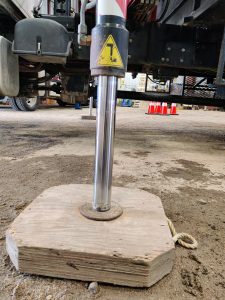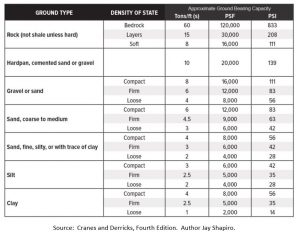 Are you using the correct size outrigger pads for the job?
Are you using the correct size outrigger pads for the job?
A question we ask during each of our training programs to every operator and the answer is typically the same one: “I’m using what is or was on the truck”.
While it’s a fair answer, it’s not the right answer. The response I provide to them is also easy: “what type of soil conditions are you facing this day? While that seems pretty easy, the truth of the matter is also apparent and that is, these small, largely unregulated crane sizes were put together by an installation facility with little to no regard to ground conditions and it is NOT up to the installer to even put pads on the truck at all.
When it comes to safe crane operation, it’s entirely up to the owner of the business to ensure that the equipment provided to the employee has ALL of the correct devices on it to ensure to the best of their ability, a safe operation at all times.
BUT…and it’s a big one, there are 1000’s of these little 2-ton up to 8 ton crane trucks at work in this region on the daily. Some bought brand new, some second hand, some through auctions, etc. The point I make is simply this, over time the “new” outrigger pads have deteriorated, fallen off the truck, pushed into the soft ground, replaced with make-shift pad made up to some 2×4’s or 2×6’s sandwiched by some 1/2″ plywood that has been nailed to hobbled together.
Now is this bad? Well I can dive very deep into this matter but when it’s been discussed 100’s of times previously by some great operators nd engineers, why not just point you in that direction of the information on their site.
You can read the article (one of many), HERE. By ALLMI a top trade association and highly respected in the UK.
Now back to the hobbled pad idea. Why is this so bad. Lets do a shallow jump and use some information most crane owners don’t get to see right away from the manufacturers:
Basic load calculation you should learn as a crane operator of ANY size crane is how to determine correct size pads for the application.
Know the soil you are working on in terms of PSI or yield strength (see chart below)
Once you have determined this (how will you determine this is also the challenge faced), you follow the procedures outlined by your company policy.
In this case we will look at the Fassi F65 it shows a ground pressure of 288 PSI (rounded) a ground pressure.
